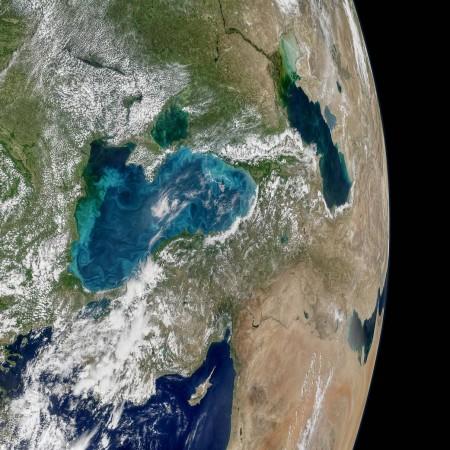
NASA's Aqua satellite has spotted a strange yet stunning phenomenon in Black Sea -- turquoise coloured dazzling swirls.
Also Read: NASA: SOFIA detects cool dust around energetic active black holes
These turquoise hues in Black Sea indicates the presence of microscopic marine algae – phytoplankton. They survive by preparing their food using sunlight and dissolved nutrients.
Rivers Danube and Dnieper, which carry nutrients to Black Sea, are shown in the image.
The traces of phytoplankton were found flowing in water currents and eddies with the help of the Moderate Resolution Imaging Spectroradiometer (MODIS) on NASA's Aqua satellite.
Marine phytoplankton help in sustaining marine life and ocean ecosystem, but excessive blooming can result in the destruction of the marine life due to loss of oxygen from the water body – eutrophication.
There are various types of phytoplankton and two of them are present in Black Sea. The first is coccolithophores, which is microscopic and plated with white calcium carbonate. When there is a spurt in their population, they appear like milky water that can be easily spotted from space.
The other type of phytoplankton found in Black Sea, diatoms, are unicellular microbes which have the ability to make the water appear darker.
"The May ramp-up in reflectivity in the Black Sea, with peak brightness in June, seems consistent with results from other years," said Norman Kuring, an ocean scientist at NASA's Goddard Space Flight Center.
According to NASA, this year's phytoplankton bloom is found to be one of the brightest that caught Kuring's attention since 2012.
"It's important to remember that not all phytoplankton blooms make the water brighter. Diatoms, which also bloom in the Black Sea, tend to darken water more than they brighten it," Kuring said.








